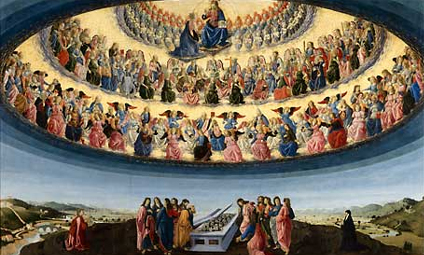There might be as many as a hundred of them on your mantelpiece and there is, almost certainly, one on top of your tree, but the chances are you haven't taken the time to look at them - to note their differences, their quirks and habits. Angels are just part of the festive scenery: airy, anonymous, almost abstract embellishments to the modern Christmas.
Almost, but not entirely abstract. Angels have a past. To follow the evolution of the angel in art, its vari-ous metamorphoses and eventual extinction, is to see in miniature the fluctuations of the Christian faith, and its gradual decline, in the West. Angels may have be denatured as God's messengers, but they are, still, carriers of fascinating information.
The history of the angel in art is partly a history of the humanisation - the imaginative materialisation - of the supernatural. The idea that divine will requires these intermediaries, winged beings whose forms are half mortal, half supernatural, goes too far back to trace. The word ''angel'' is ancient, derived via Old French and Latin from the Greek ''aggelos'', itself a translation of the Hebrew ''mal'akh'', meaning ''messenger''. The angels we know from art galleries and Christmas cards are descendants of Mercury, the envoy of Jupiter, and of the innumerable winged deities to have preceded him. They demonstrate the close links between pre-Christian and Christian imagery, although, for many people now, even their Christian significance is much diminished.
Nowadays, for instance, we tend to think of angels as being, more or less, all the same. We might be able to tell the difference between an archangel and a cherub - but the finer distinctions between various kinds of angel that might have been recognised by, say, a fourteenth-century churchgoer, tend to be lost on us. The nine kinds...

On a wing and a prayer
28-12-1991

